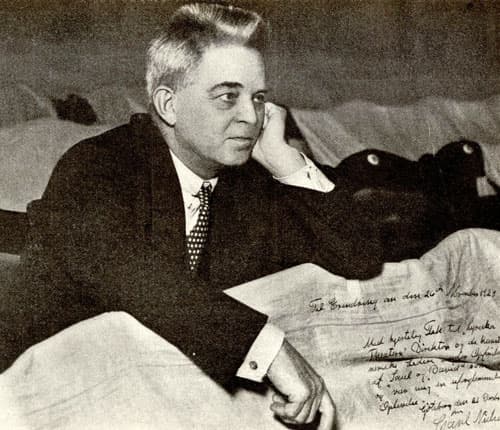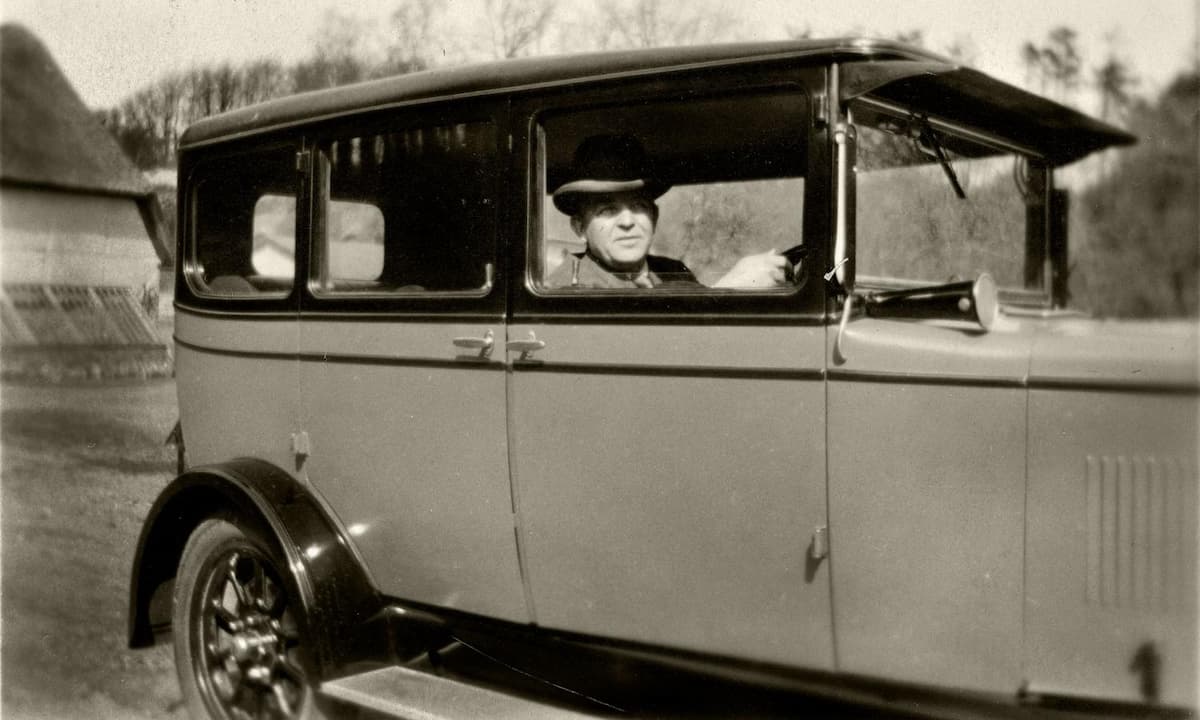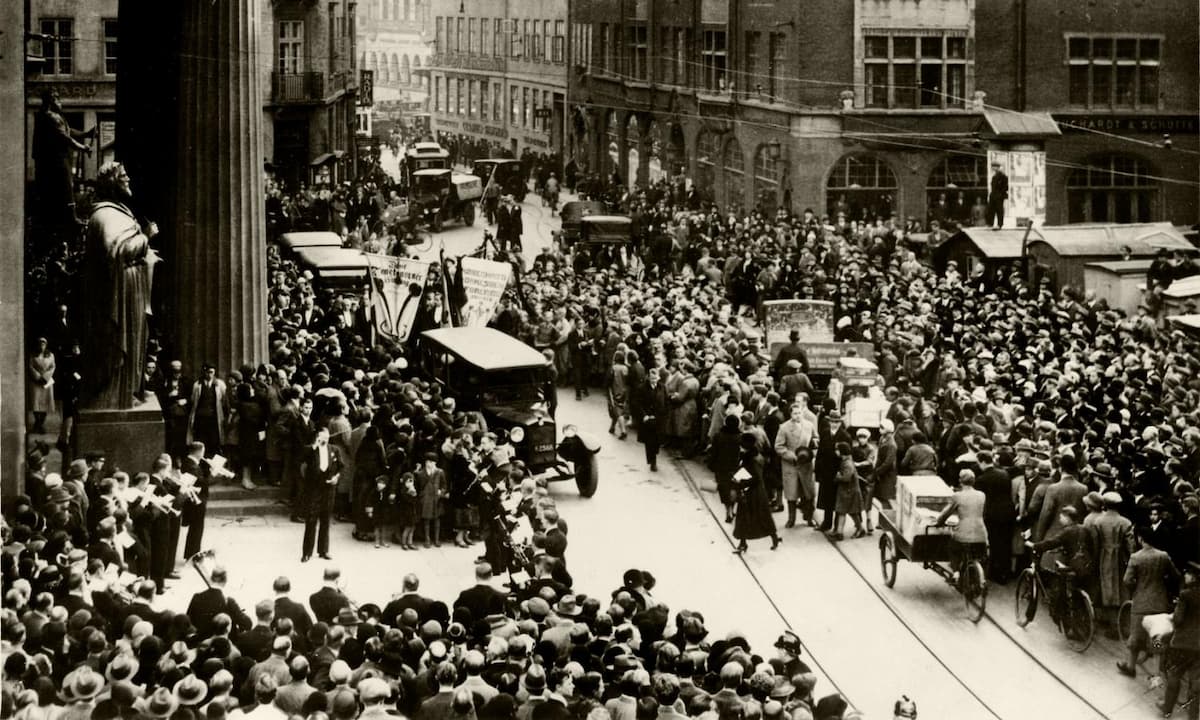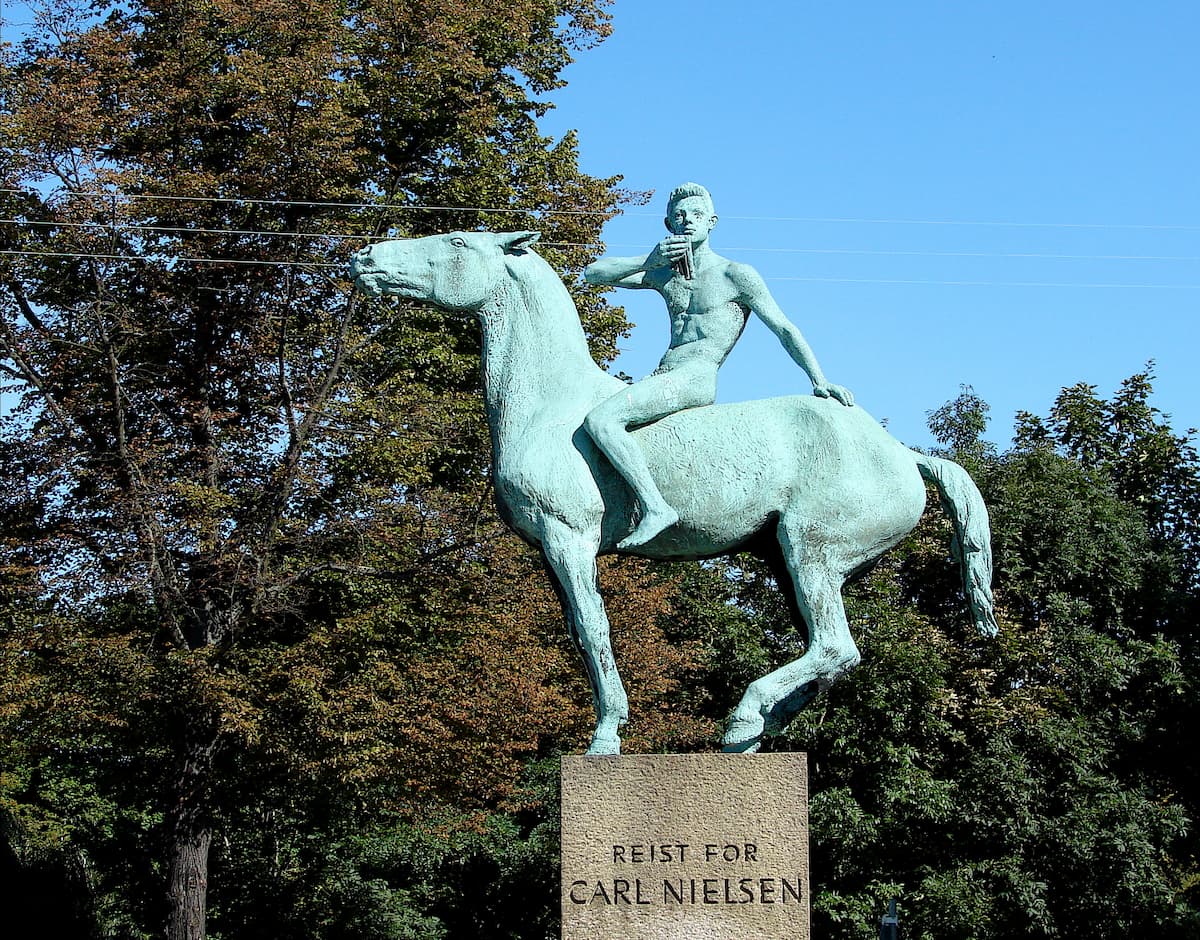The great Nordic countries of Europe have produced two significant composers over the last 150 years. Both were born in 1865, but Denmark’s Carl Nielsen always stood in the shadow of Jean Sibelius. Sibelius came from an upper-middle-class upbringing, while Nielsen was the child of subsistence peasants. It took the advocacy of Leonard Bernstein and others for Nielsen to finally emerge internationally as one of the most powerful and individual musical voices from the first quarter of the 20th century.
Carl Nielsen: Violin Concerto, Op. 33
The 60th Birthday Celebration

Carl Nielsen, 1928
At the height of his fame, Carl Nielsen celebrated his 60th birthday in 1925. A festival concert had been organised on the day in the Tivoli Pleasure Gardens, and Nielsen conducted both his 5th Symphony and Springtime on Funen. He received visits, congratulations, and deputation at his home, and after the evening concert, there was a celebration dinner in which 400 guests took part.
Plenty of newspapers scampered for interviews, and Nielsen surprisingly told them, “If I could live my life again, I would banish all artistic whims from my head and serve an apprenticeship, or do some other form of useful work.” When journalists politely objected, Nielsen explained, “I was forced to become a musician, circumstances made me one, and also became one perhaps I harboured the delusion that music could bring me joy and happiness.”
Carl Nielsen: Springtime on Funen, Op. 42 (Asa Baverstam, soprano; Kjell Magnus Sandve, tenor; Per Hoyer, baritone; Swedish Radio Choir; Swedish Radio Symphony Orchestra; Esa-Pekka Salonen, cond.)
An Automobile Accident

Carl Nielsen in his Morris, 1928
After a brief health scare from a serious attack of angina in 1922, life was relatively stable. In 1928 Nielsen bought a new car and was unfortunately involved in a serious accident in 1930. Apparently, he carelessly drove his brand-new Morris out in front of a tram. He was later judged to be legally responsible for the accident and had to pay a hefty fine. The Copenhagen Tram Company also sent him a large bill, and Nielsen spent three weeks in the hospital, where he was treated for concussion and various minor injuries.
Nielsen was well aware of his position in Danish musical life, and in 1931 he was made Principal of the Royal Danish Academy of Music. He had long rejected the idea of getting involved in the administrative side of music, but he now changed his mind. “For the sake of one’s position and of art, one ought to set more store in the sort of things that actually mean you are better able to promote issues. When it comes to authorities, and moneyed men in particular, such outer things do have a role to play.”
Carl Nielsen: 3 Motets, Op. 55
His Autobiography Living Music

Carl Nielsen’s funeral
Nielsen also began to author a long series of newspaper articles, writing down his reminiscences of his childhood and youth. In his autobiography Living Music, Nielsen pointed to the history of Danish literature in his life as an important source of his artistic ambitions. Music, in turn, had been all-embracing as it meant social advancements and a secure and relatively stable income.
Nielsen had no belief in the afterlife and he was frequently criticized for writing hymns without being a regular church-goer. However, he had a profound respect for religious texts, and he often turned to them in time of crisis. Looking to embed his artistic personality in genres that transcend time, he composed two of his last great works, the Three Motets, and the organ work Commotio, modelled on the Baroque toccata.
Carl Nielsen: Commotio, Op. 58
Death and Funeral

Carl Nielsen Monument
In September 1931, his opera Masquerade was to be performed in a new production under the direction of Egisto Tango. Nielsen enthusiastically attended all rehearsals, but his weak heart forced him to bed. He took a turn for the worse on the day of the premiere but insisted on attending the evening’s performance nevertheless. It all proved too much, and he was admitted to hospital with cardiac thrombosis on 1 October 1931. He peacefully died, surrounded by his family, after midnight on 3 October at Copenhagen University Hospital.
Apparently, his last words to his family were “You are standing here as if you were waiting for something.” The funeral took place at Copenhagen Cathedral on 9 October, and it was attended by the king and queen, and representatives from all branches of government. All the music, including the hymns, was by Nielsen. His coffin was lowered into the ground at Copenhagen’s Vestre Cemetery to music from his Wind Quintet, and Anne Marie Carl-Nielsen made a very personal speech, thanking the “Danish nation for singing his songs.”
For more of the best in classical music, sign up for our E-Newsletter
